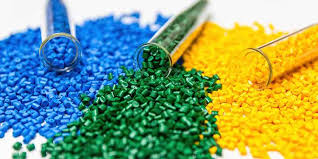Acrylonite butadiene styrene (ABS) is derived from acrylonite, butadiene, styrene and carbon.
Acrylonite is a synthetic monomer produced from propylene and ammonia; butadiene is a petroleum hydrocarbon obtained from the C4 fraction of steam cracking; styrene monomer is made from dehydrogenation of ethyl benxene – a hydrocarbon obtained in the reaction of ethylene and benzene.
The advantage of ABS in plastic fabrication
ABS combines the strength and rigidity of the acrylonitrile and styrene polymers with the toughness of the polybutadiene rubber.
The most important mechanical properties of ABS are impact resistance and toughness. A variety of modifications can be amplified by increasing the proportion of polybutadiene in relation to styrene and also acrylonitrile although this causes changes in other properties. Impact resistance does not fall off rapidly at lower temperatures. Stability under load is excellent with limited loads. Thus by changing proportions of its components ABS can be prepared in different grades. Two major categories could be ABS for vacuum forming and ABS for injection moulding. Generally ABS would have useful characteristics within a temperature range of 10 to 80C
The final properties will be influenced to some extent by the conditions under which the material is processed to the final product. For example, molding at high temperature improves the gloss and heat resistance Of the product whereas the highest impact resistance and strength are obtained by molding at low temperatures. Fibers (usually glass fibers) and additives can be mixed in the resin pellets to make the final product strong and raise the operating range to as high as 80C. Pigments can also be added.
The aging characteristics are largely influenced by polybutadiene content and it is normal to include antioxidents in the composition. Other factors include exposure to ultraviolet radiation.
Even though ABS plastics are used largely for mechanical purposes, they also have electrical properties that are fairly constant over a wide range of frequencies.
ABS is flammable when it is exposed to high temperatures.
Uses of ABS Plastic
The list of applications for ABS is long and growing. Its light weight and ability to be injection moulded and extruded make it useflu in manufacturing products such as drain waste vent pipes, musical instruments, gold club heads, automotive car parts, enclosures for electrical assemblies, protective headgear, canoes, edging for furniture panels, carry caes, kitchen appliances and toys such as Lego bricks.


